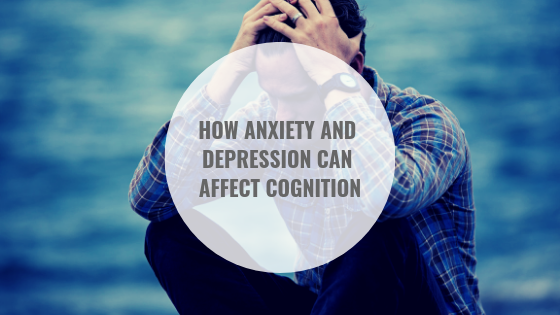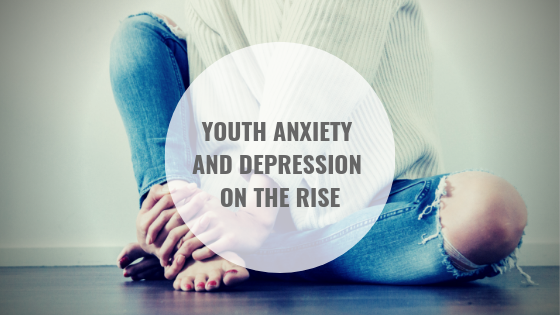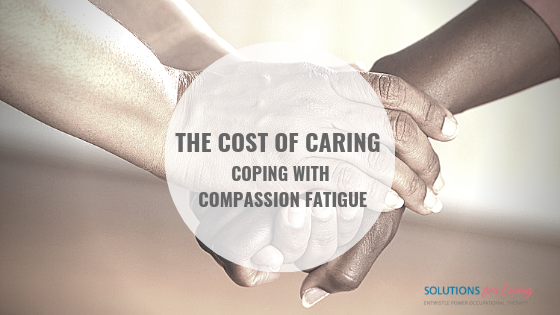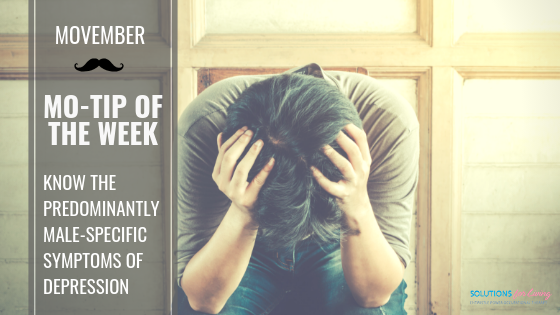Julie Entwistle, MBA, BHSc (OT), BSc (Health / Gerontology)
Co-written with Ashley Carnegie, Occupational Therapist
As a student working with an Occupational Therapist in the community, I realized early in my placement that many clients struggle with anxiety and depression in combination with cognitive challenges like decreased attention, concentration and focus, difficulties with memory, and slower information processing abilities. This spiked my interest, as I was unaware of the possible impact anxiety and depression could have on cognition and how these symptoms could be related. I decided to look into this further, and am sharing my findings below.
Occupational Therapists work in a wide variety of settings including the community. As the hospitals become less and less able to accommodate people long-term, community-based occupational therapy services are becoming more and more common. Working in the community allows occupational therapists to reach a wide variety of clients, and therapists utilize a strength-based approach to build on the client’s current strengths to promote wellness and productivity.
Depression and anxiety are the most common types of mental illness throughout the world, including Canada. From my community placement experience as a student Occupational Therapist, I have found that the majority of the clients I have seen are experiencing depression and/or anxiety, often in combination with other primary diagnoses.
Interestingly, depression and anxiety can negatively impact the way the brain thinks, learns, and processes information and thus how it functions. However, the relationship is complicated as a decrease in cognition may also lead to an increase in depression and/or anxiety which can then perpetuate the cycle.
Research has highlighted how anxiety and depression can negatively impact several aspects of cognition including:
- Psychomotor speed
- Attention
- Executive functioning
- Problem-solving
- Attentional switching
- Cognitive flexibility
- Visual learning
- Memory
The result for most people tends to be poor functional outcomes in their daily lives. Additionally, the brain regions believed to be responsible for these functions have been shown to be abnormal in people that also suffer from anxiety and depression (e.g. hippocampus, amygdala, temporal lobes, and prefrontal cortex). Decreased memory, slowed information processing, and issues with verbal communication can negatively impact multiple areas of people’s lives. This information demonstrates the importance of the need to detect and treat anxiety and depression as early as possible as well as the need for early cognitive interventions for clients with anxiety and depression.
As a student Occupational Therapist, I wanted to further investigate how Occupational Therapists can help. I found evidence that Occupational Therapists can help clients in reducing functional decline, while also reducing the probability of relapse by treating cognitive deficits. Occupational Therapist’s target these areas by teaching client’s cognitive remediation and compensation strategies during their interventions and treatment monitoring.
Examples of remediation interventions may include:
- Retraining higher-level cognitive skills (e.g. strategy use, self-monitoring, self-correction, problem-solving, self-evaluation)
- Education
- Relaxation and stress management techniques to regain control
- Divided attention training (e.g. learn tasks separately and then combine tasks)
- Imagery
- Rehearsal strategies
Examples of compensatory interventions may include:
- Modifying the environment (e.g. dim lights, reduce distractions)
- Altering the task, (e.g. use of rest breaks, breaking the task into smaller components, repetition of instructions)
- Use of both internal and external cueing/reminders (e.g. use of mnemonics, post-it notes, organizers, applications)
With both, often, a cognitive behavioural approach is taken. Cognitive behavioural therapy (CBT) works to change clients thought structure to allow positive mood change, enhance coping strategies/problem solving, and help challenge faulty beliefs.
Anxiety and depression are common and are known to negatively impact a person’s cognition. Worsening cognition then can deteriorate anxiety and depression further. Early intervention is key to break this cycle and to promote function and wellness. Occupational therapists play a vital role in providing interventions for those with anxiety and/or depression by implementing interventions for these issues, as well as treating the common resulting cognitive deficits. Both remediation and compensatory techniques are used, often through cognitive behavioral therapy. If you, or someone you know, is struggling with anxiety or depression this may present as cognitive difficulty, or if cognitive issues are present, anxiety and depression may also surface. Consider occupational therapy if you would like support and strategies to improve these symptoms and to reduce their effect on your daily life.
References:
1. Carrier, A., & Raymond, M. H. Community occupational therapy practice in Canada: A diverse and evolving practice.
2. McRae, L., O’Donnell, S., Loukine, L., Rancourt, N., & Pelletier, C. (2016). Report summary-Mood and Anxiety Disorders in Canada, 2016. Health promotion and chronic disease prevention in Canada: research, policy and practice, 36(12), 314.
3. Statistics Canada (2014) Survey on Living with Chronic Diseases in Canada (SLCDC). Retrieved from http://www23.statcan.gc.ca/imdb/p2SV.pl?Function=getSurvey&SDDS=5160
4. Lee, R. S., Hermens, D. F., Porter, M. A., & Redoblado-Hodge, M. A. (2012). A meta-analysis of cognitive deficits in first-episode major depressive disorder. Journal of affective disorders, 140(2), 113-124.
5. Jaeger, J., Berns, S., Uzelac, S., & Davis-Conway, S. (2006). Neurocognitive deficits and disability in major depressive disorder. Psychiatry research, 145(1), 39-48.
6. Bora, E., Fornito, A., Pantelis, C., & Yücel, M. (2012). Gray matter abnormalities in major depressive disorder: a meta-analysis of voxel based morphometry studies. Journal of affective disorders, 138(1), 9-18.
7. Femenía, T., Gómez-Galán, M., Lindskog, M., & Magara, S. (2012). Dysfunctional hippocampal activity affects emotion and cognition in mood disorders. Brain research, 1476, 58-70.
8. Lorenzetti, V., Allen, N. B., Fornito, A., & Yücel, M. (2009). Structural brain abnormalities in major depressive disorder: a selective review of recent MRI studies. Journal of affective disorders, 117(1), 1-17.
9. Fleming, J. (2017). An occupational approach to cognitive rehabilitation. Workshop presented through the Canadian Association of Occupational Therapists, Toronto, ON.
10. Grieve, J. I., & Gnanasekaran, L. (2008). Intervention for Cognitive Impairments. Grieve, JI, & Gnanasekaran, L.(3rd ed. ed.). Neuropsychology for occupational therapists: cognition in occupational performance. Oxford. Malden, Mass.: Blackwell.
11. Haran, D. (2009). Cognitive-behavioral therapy for depression. The Israel journal of psychiatry and related sciences, 46, 269.
12. Knapp, P., & Beck, A. T. (2008). Cognitive therapy: foundations, conceptual models, applications and research. Revista Brasileira de Psiquiatria, 30, s54-s64.











